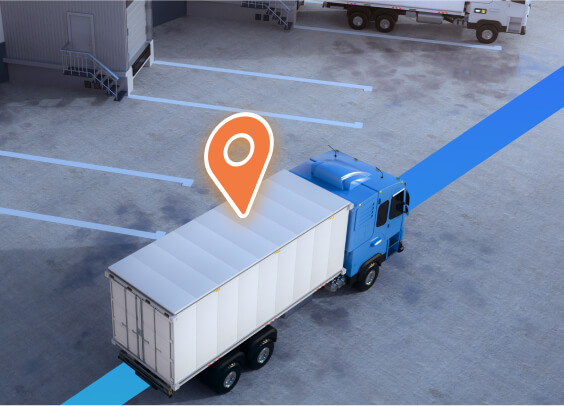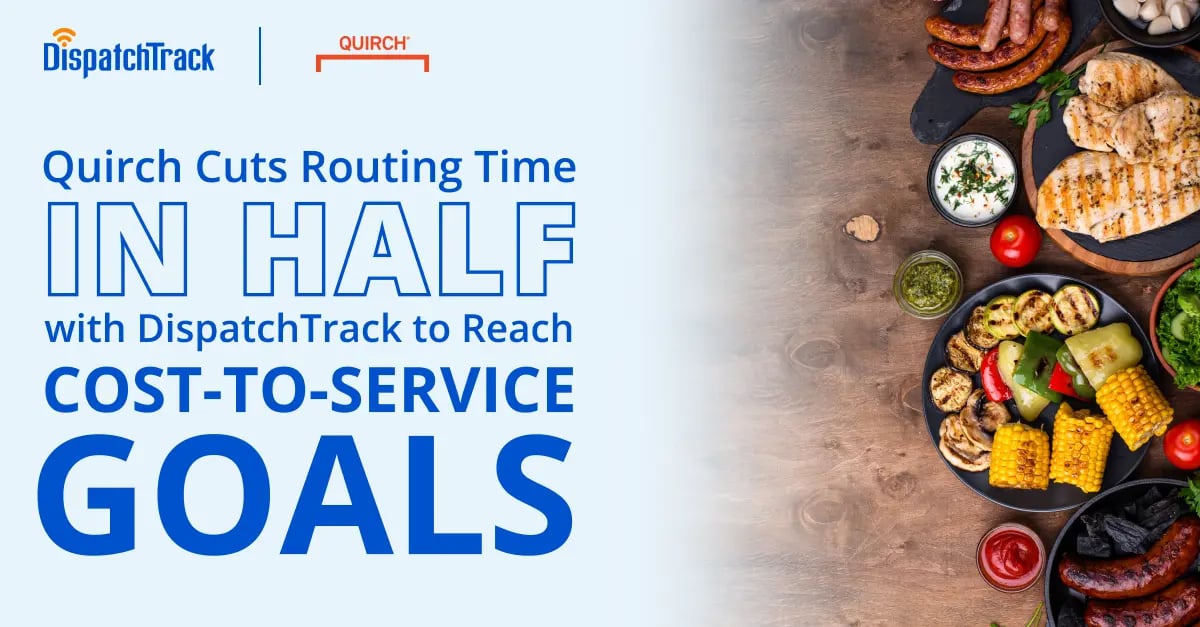No one needs to tell delivery businesses how important it is to have efficient routes. Fuel and driver pay are two of the biggest expenses that most fleet operators grapple with, so anything you can do to reduce the time and miles required to make each stop can have a huge impact. 
At the same time, your routes have a direct impact on customer satisfaction. With inefficient routes, it can be difficult to ensure that you’re delivering on time. It can also be difficult to maximize your capacity utilization—meaning that you can’t serve as many customers per day or per week.
Those are just a couple of the reasons that effective route optimization has become non-negotiable for so many modern businesses. But what exactly should you expect from route optimization? What are the key benefits, and how do you go about choosing the right software solution to optimize your delivery routes?
What Does Route Optimization Mean for Delivery Businesses?
At a high level, route optimization is quite simple. You just need to find an efficient sequence for stops for a given number of orders, such that you complete all the deliveries within the allotted time without driving more miles than necessary.
It gets more complex than this pretty quickly. For starters, there’s the fact the “simple” task we described above isn’t really that simple from a mathematical perspective. Each new stop increases the possible number of combinations exponentially, so that after only a few stops you quickly have a number of potential routes that’s too large to compare by hand.
When you add in things like differences in driver speed and skill, customer time window requests, differences in vehicle capacity, and other parameters, finding the most efficient route becomes daunting pretty quickly. The result is that planners are almost never going to be in a position where they can find the right routes by hand on a consistent basis. Sure, sometimes you can eyeball it—but as soon as you add a wrinkle like a street closure or a request for a complex installation, it can all begin to fall apart.
That’s why route optimization software has been a key part of the delivery technology stack for many years now. It’s a necessary building block for smarter deliveries.
Benefits of Route Optimization Software
The right route optimization can make a huge difference in cutting through the complexities we talked about above and streamlining the process of planning efficient routes.
Here a few key benefits:
- Driving fewer miles: When you find the shortest distance between stops and the efficient sequence of those stops, you can drive fewer miles per stop. The result is that you save money on fuel and driver hours.
- Better capacity utilization: By minimizing drive time between stops, your routing platform should enable you to complete more stops per route per day. This means that you get more out of your capacity, and you can handle more deliveries before having to contract to a 3rd party or purchase more assets.
- Faster delivery turnarounds: This is somewhat dependent on having software that generates routes relatively quickly—but when you can use your capacity to its fullest, you can shrink the lead time for orders, delighting customers in the process.
- Improved strategic planning: If your software supports it, you can use the same route optimization techniques to run what-if scenarios for potential changes in your network. This helps you make informed decisions about potential geographic expansions, placement of hubs and warehouses, etc.
- Reduced planning time: A route optimization tool with the processing power to route thousands of stops in seconds can significantly cut down on the time it takes routers and dispatchers to come up with delivery routes for a given day or week. By the same token, a routing interface that’s easy to use speeds up the process even further and enables you to run reroutes more frequently.
- Better on-time performance: Without the right tools, coming up with accurate delivery ETAs across an entire route is nearly impossible. But when you can leverage technology like AI and machine learning to improve the accuracy of your time estimates, you can keep customers happy with consistent on-time deliveries.
How a Major Food Distributor Reduced Routing Time with DispatchTrack
The benefits that we’re talking about here are just hypothetical. DispatchTrack’s route optimization capabilities have helped numerous businesses over the years to reduce the time they spend routing, cut down on fuel costs, and improve on-time performance.
One of these businesses is Quirch Foods. Quirch Foods has become one of the largest distributors of food products in the U.S., Latin America, and the Caribbean over the last 50+ years. A few years ago, the company was targeting smart, sustainable business growth via combination of acquisitions and introducing its own new brands—but its legacy tools were too cumbersome and complex to empower them to scale their processes.
That’s where DispatchTrack came in. We offered them a platform built on AI-powered hybrid routing to blend static route planning and dynamic route optimization in record time and rapid what-if scenarios for easily testing and optimizing new distribution plans.
With DispatchTrack Quirch was able to cut its daily routing time by more than 50%.
This enabled them to maximize capacity utilization and service their customers more efficiently, which in turn helped them to bring new businesses like Colorado Boxed Beef, Butts Foods, and others into the fold without risking service interruptions or late deliveries to important customers. The result was a strong foundation for continued business growth.
“Since partnering with DispatchTrack, we have been able to implement our static planning tools to codify our dispatchers' specialized knowledge and create daily skeleton routes, then dynamically add and adjust stops to those routes as needed. DispatchTrack's hybrid routing allows us to create more efficient routes in radically less time. And the results were immediate. We boosted our route efficiency, which translated into immediate savings.”
--Luis Porto, Director, Operations Development at Quirch Foods

How to Choose the Right Route Optimization Platform
Different route optimization platforms obviously offer different things. The right one can amplify the benefits we discussed above. Like the solution that DispatchTrack offered to Quirch, the right routing platform saves time and improves customer service—but how can you tell which option is the right fit for your business?
Here are a few things to look for:
- AI and machine learning capabilities: In order to produce accurate ETAs, your software needs to consider more factors (such as service time, traffic patterns, and much more) than most legacy software solutions can deal with. To really achieve ETA accuracy, you’ll want a platform that can leverage AI to turn accumulated delivery data into precise delivery time predictions.
- Scalable SaaS architecture: When it comes to routing, speed is more than just a nice-to-have. It can be the difference between an order cutoff at noon versus 8pm the previous day, and it can be the difference between accommodating last minute orders or potentially disappointing your customers. How do you achieve the level of routing speed you need? By opting for SaaS-based software that’s architected to process routes quickly, at scale.
- Room for human intelligence: The trouble with some routing solutions—even powerful ones—is that they don’t make it easy for human planners to bring their own expertise to the table. Even the best system-generated plans might need adjustments, and you need a solution that makes it easy to make those adjustments without losing out on efficiency. By the same token, it’s important to be able to codify things like driver affinity, driver skill levels, customer time window preferences, and more within your routing engine so that it produces results you can actually use.
- Routing optimization and execution within a single platform: Platforms that only focus on routes and don’t provide any support for what happens after the routes have been generated—i.e. the actual deliveries—inevitably create silos. Ideally, you want your routing and execution to happen within a single pane of glass. This way, you can create a continuous feedback loop to improve both planning and execution over time.
Choosing the right route optimization solution can be a challenge. But if you look for the items listed above, it can help steer you in the right direction. If you’d like to learn more about how DispatchTrack provides those capabilities to improve our customers’ route optimization, don’t hesitate to contact us.